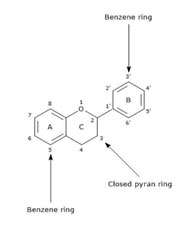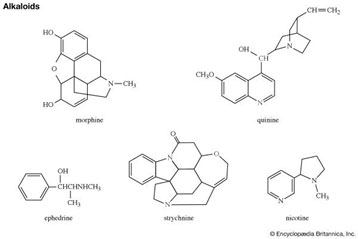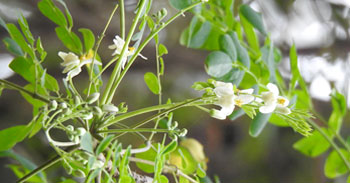KJC Medicinal Garden
Nugge mara
Moringa oleifera
Order: Brassicales
Family: Moringaceae
Genus: Moringa
Species: O. oleifera
Common Names: . Drumstick tree. (The long, slender, triangular seed-pods), . Horseradish tree. (from the taste of the roots, which resembles horseradish)
Native to Part of Africa and Asia. Indian Subcontinent, (Himalayan foothills as well as widely cultivated across the tropics)
Other plants of the same genus with medicinal properties
-
M. concanensis Nimmo
M. longituba
M. ovalifolia Dinter
M. arborea Verdc
- M. Oleifera is a small to medium evergreen or deciduous tree.
- It can grow to a height of 10-12 m.
- It has a spreading open crown, typically umbrella-shaped. The roots are deep.
- The branches are fragile and drooping, with a feathery foliage.
- Leaves are alternate, 7-60 cm long with 4-5 pairs of leaflets. that are dark green, elliptical to obovate, and 1-2 cm in length.
- Flowers are pentamerous, zygomorphic, 7-14 mm long and white to cream in colour.
- The fruit is a typically 3-valved capsule, 10 to 60 cm in length, often referred to as a “pod” and looking like a drumstick.
- Leaves have been reported to contain flavonoid pigments such as kaempferol,rhamnetin, isoquercitrin and kaempferitrin.
- Stem are long.
Uses in Tradition systems of medicine
- The bark, sap, roots, leaves, seeds and flowers are used in traditional medicine.
- Moreover, the plant play a vital role in culture, social, religious and Nutritional aspects.
- The use of plant as medicine for human health originated 60,000 years ago in mid-Paleolithic age.
- Leaves and fruits are used to maintain skin health as well as mental fitness.
- As this plant has wide range of medicine uses, it has been screened for various pharmaceutical activities.
- Leaves, stem, seeds are used for the treatment of skin disease, eye diseases.
- It helps to prevent cancer.
- Face dark spot and pimples treatment.
- Normalises blood pressure, stimulate hair growth additionally it improves vision power.
- Vitamin A
- Vitamin C
- Vitamin E
- Minerals- Zinc & Iron
- Calcium
- Magnesium
- Protein
- Carbohydrate 3.7; Fibre 0.90g Zinc 0.16; Phosphorus 70mg; Potassium 259 mg; Iron 00.5mg; Protein 6.70g;
Suggested Medicinal Properties
- Antitumor,
- Antipyretic,
- Antiepileptic,
- Anti-inflammatory
- Antihypertensive,
- Cholesterol lowering,
- Antioxidant,
- Antidiabetic,
- Antiulcer,
Active Phytochemicals
1. FLAVONOIDS (2-phenyl-1,4-benzopyrone)
The Moringa genus has high antioxidant activity mainly due to its high content of flavonoid. Most of the flavonoids present in the genus are in the flavanol and glycoside form. The most common flavonoids of the genus are Rutin quercetin, Rhamnetin, Kaempferol, Apigenin and Myricetin. Optimization research has been conducted to discover the best way to extract flavonoids from M. Oleifera with highest yield. As a result, subcritical ethanol extraction yielded 26.7% more flavonoid than a reflux method.

2. ALKALOIDS
Two new pyrrole alkaloid glycosides were isolated from M. oleifera leaves, marumoside A and marumoside B together with pyrrolemarumine-4″-O-α-L-rhamnopyranoside

3. Glucosinolate

4. Phenolic Acid
5. Terpenes
References

